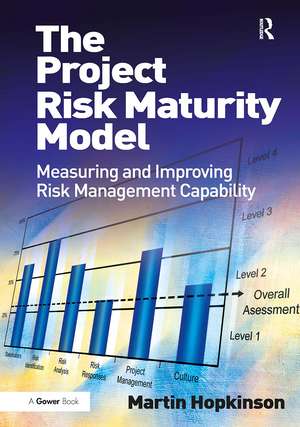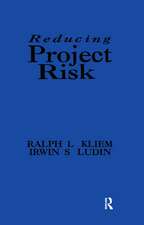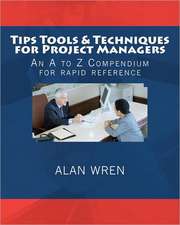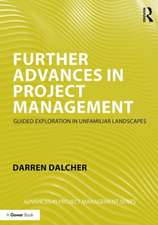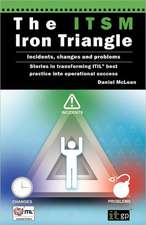The Project Risk Maturity Model: Measuring and Improving Risk Management Capability
Autor Martin Hopkinsonen Limba Engleză Paperback – 24 iun 2024
| Toate formatele și edițiile | Preț | Express |
|---|---|---|
| Paperback (1) | 210.45 lei 43-57 zile | |
| Taylor & Francis – 24 iun 2024 | 210.45 lei 43-57 zile | |
| Hardback (1) | 769.51 lei 43-57 zile | |
| GOWER PUBLISHING LTD – 28 dec 2010 | 769.51 lei 43-57 zile |
Preț: 210.45 lei
Preț vechi: 274.07 lei
-23% Nou
Puncte Express: 316
Preț estimativ în valută:
40.27€ • 42.15$ • 33.52£
40.27€ • 42.15$ • 33.52£
Carte tipărită la comandă
Livrare economică 31 martie-14 aprilie
Preluare comenzi: 021 569.72.76
Specificații
ISBN-13: 9781032838731
ISBN-10: 1032838736
Pagini: 264
Dimensiuni: 174 x 246 mm
Greutate: 0.49 kg
Ediția:1
Editura: Taylor & Francis
Colecția Routledge
Locul publicării:Oxford, United Kingdom
ISBN-10: 1032838736
Pagini: 264
Dimensiuni: 174 x 246 mm
Greutate: 0.49 kg
Ediția:1
Editura: Taylor & Francis
Colecția Routledge
Locul publicării:Oxford, United Kingdom
Public țintă
Professional Practice & DevelopmentNotă biografică
Martin Hopkinson APMP is a Principal Consultant with QinetiQ, specialising in risk management and project governance. Martin has led the risk management process on several multi-billion pound projects and is lead developer for the Risk Maturity Model. Martin is co-author of the Association for Project Management's Project Risk Analysis and Management (PRAM) Guide and led the group that produced the APM's guide Prioritising Project Risks. As a member of the APM's Governance of Project Management SIG, he was on the editing committee for the APM's guide Directing Change. On behalf of the SIG he sponsored Co-Directing Change - a guide to the governance of multi-owned projects and Sponsoring Change - a guide to the governance aspects of project sponsorship.
Cuprins
Contents: Foreword; Preface; Part I Introduction to the Project Risk Maturity Model: The project risk maturity model; Scope and context; Starting from the top: using a multi-pass risk management process; The UK MoD defence procurement agency: a project risk maturity model case study; Risk maturity model data collection; Part II Guide to the Project Risk Maturity Model: Stakeholders; Risk identification; Risk analysis; Risk reponses; Project management; Risk management culture; Appendices; References; Software user instructions; Index.
Recenzii
'The Project Risk Maturity Model provides an answer for those who know that they haven’t yet peaked in project risk management capability, or who want to maintain or improve their ability to manage project risk. Martin Hopkinson has done a great job over the past ten years in developing the Project Risk Maturity Model into a robust framework, and this book allows others to access and apply his insights and experience. I’m pleased to recommend it.' Dr David Hillson, The Risk Doctor 'This book is a must for project and business professionals who want to find out how to improve the risk management culture in an organisation, and determine what actions should be taken for that purpose.Project professionals can benefit from this book, analysing their risk management maturity level, going through the assessment questions and generating his/her own action plan.' Alfonso Bucero, International Correspondent for PM Forum and founder/Managing Partner of BUCERO PM Consulting, PMI Distinguished Contribution Award 2010 'This work will remain on my bookshelf, festooned with stickers marking several sections which I found useful and informative.' Anne Dagen, Arras People How To Manage a Camel Blog Book Reivew ’Martin Hopkinson’s The Project Risk Maturity Model provides an excellent tool to measure and improve an organization’s ability to manage risk.’ PM World Journal
Descriere
Martin Hopkinson equips you with the ability to assess the capability of your organisation's risk management process on four distinct levels. This enables you to assess whether your current level of risk management is appropriate for the nature and scale of the projects you are undertaking. Using an objective measure of risk management capability i
